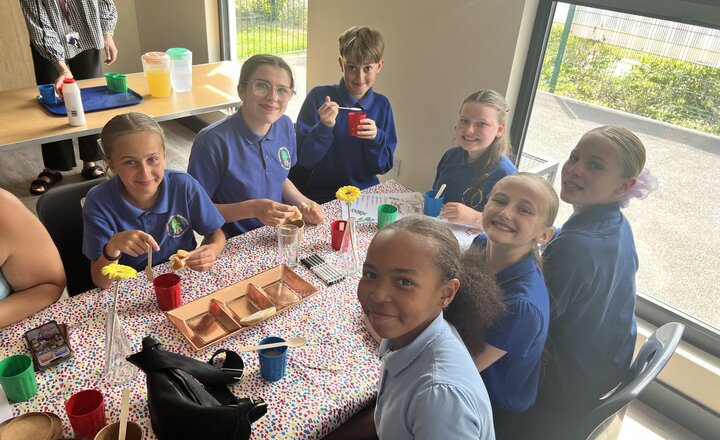Design Technology

'The designer does not begin with some preconceived idea. Rather, the idea is the result of careful study and observation, and the design a product of that idea.' - Paul Rand
Intent
It is the intent of Chapelford Village Primary School for Design Technology to be delivered via an exciting and inspiring curriculum in all year groups through at least one project per term. One of these projects will be food related. Design technology will be delivered in a way which develops learning and results in the acquisition of knowledge and skills in line with the National Curriculum Design Technology Programmes of study. It is the intent of our school that our children will be prepared for a rapidly changing world where design technology is key. They will become independent thinkers and problem solvers, creating resilience in an ever-changing world. They will be encouraged to work as part of a team and to develop their own individuality when creating products. Users’ needs and wants will be considered and they will learn how to solve real life problems within a varied context. They will study designers from the past and present inspiring them to become innovators and risk takers who are not afraid of challenges. The intent is to teach the importance of making on-going changes and improvements during the making stages - an iterative process.
Implementation
At Chapelford Village Primary School the teaching of Design Technology follows the National Curriculum via the use of the Design and Technology Associations Project on a Page planning. This is delivered via a clear and recaliberated curriculum map. Each project provides children with an opportunity to investigate existing products before considering the next stage of the design process. Children are provided with criteria and a brief including a user and a purpose in which to base their designs on. All children are assessed prior to the project to see which skills might be needed to plug gaps. Teachers implement vocabulary rich lessons and children have access to a knowledge mat throughout the projects. Projects are delivered on a revisit review timetable alternatively with art, giving children the chance to recall previously taught knowledge and skills. This helps children to know more, remember more and apply more. Children are encouraged to make mistakes and adapt their designs accordingly. They work independently and as part of small teams. Other curriculum links are discreetly taught through Design Technology.
EYFS: ➢ In our EYFS department children are encouraged to investigate and experience things and ‘have a go’ through active learning, child initiated and adult led learning. They encounter difficulties and are encouraged to find solutions. They think creatively and critically and develop their own ideas. The children develop a cultural awareness and have regular opportunities to engage with design exploring a wide range of media and materials including small tools. This provides opportunities to work together and to develop and realise creative ideas.
➢ They are encouraged to think about and discuss what they want to make and to look at existing products to generate inspiration. They reflect on problems as they arise and how they could solve them. They are asked how they would do it differently if they were to complete it again. Through cooking and nutrition, they develop an understanding of where food comes from and healthy living.
KS1: ➢ Within KS1 children will investigate existing products before beginning a project. They evaluate these products and investigate how they work and what makes them successful. They are presented with an imaginative based design brief and asked how to solve it through a design and make process. Children are encouraged to work iteratively and independently from an adult.
KS2: ➢ Withing KS2 children build on prior knowledge and skills taught in the previous key stage and are expected to produce more detailed and annotated planning including cross sectional diagrams. Children work within a real-life context and think about the user and the end purpose. Children should be introduced to computer programming to support design and they build on their understanding of a healthy diet through the food projects that are delivered.
Opportunities for Design Technology enhancements are provided when possible. For example, a recent Yar 6 class spent some time working on Dyson Vacuum project where Dyson delivered a vaunt which the children had the opportunity to disassemble and investigate before re assembling it. Design Technology after school clubs have proved popular.
Impact
Through this the children of Chapelford will know more, remember more and understand more about Design Technology and how it fits into their wider world and future plans. Most children will make excellent progress from their individual starting point through good quality teaching and observational assessment during lessons. Teaches will spot and plug gaps in skills and knowledge where necessary through the revisit and review teaching model. Children will have the confidence to evaluate their own and existing products and compare the two. All children will demonstrate confidence in designing their own products and develop a love for the subject. Design Technology is monitored by the subject leader throughout the year through learning walks, pupil voice and book monitoring, allowing her to provide support if and where necessary.
Click on the National Curriculum image for the National Curriculum programme of study for Design & Technology.
Related News

.jpeg)


